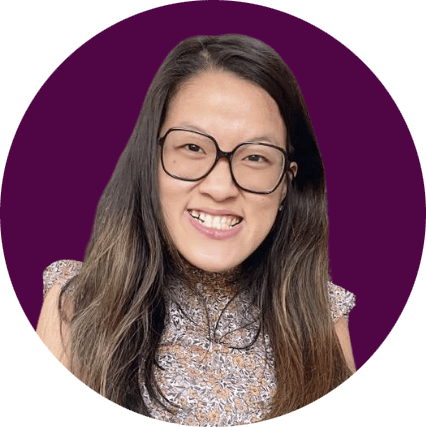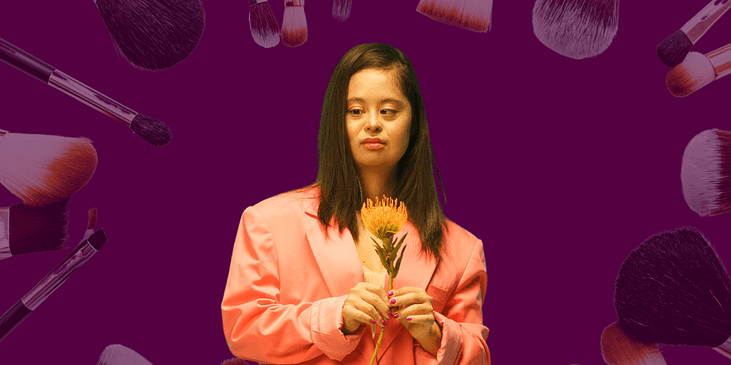by Sarah Kim
The beauty and fashion industries have long fallen short of diversity and inclusion. But in the era of social media activism, the status quo has started to shift. More and more beauty brands are being inclusive of more body shapes, sizes, and colors. But what continues to be left out is disability representation.
Industry executives are slowly implementing more disability-inclusive practices, such as portraying models with disabilities, including adaptive makeup tools, and incorporating universal design principles. But the beauty and fashion industries still have a ways to go to rectify the longstanding history of disability exclusion.
Centuries-long lack of disability representation in beauty and fashion industries
Fashion and the media reflect the beliefs and values held by society. And for most of humanity, people with disabilities were kept out of the public sphere. The large-scale push for institutionalizing people with disabilities emerged in the 19th century. Across the globe, people with disabilities were put in asylums and long-term care facilities to isolate them from mainstream society.
In the 19th century amid the Industrial Revolution following the invention of sewing machines, many beauty and fashion brands that inspired many modern-day styles started to sprout. With people with disabilities tucked away and hidden from society, fashion designers and makeup artists were oblivious to the needs of disabled customers.
This left people with disabilities with minimal options for clothing and accessories. They were excluded from the mainstream fashion landscape because they physically could not put on the clothes available in the market. Many individuals with disabilities were left to wear hospital clothing or tracksuits, leaving no room to express themselves through fashion and style. People with physical disabilities were also shunned from society when the Ugly Laws were passed in the 19th century which barred those who were “diseased, maimed, mutilated, or in any way deformed, so as to be an unsightly or disgusting object” (Chicago City Code 1881) from appearing in society.
However, many individuals with disabilities took the initiative to modify articles of clothing to fit the needs of their comfort and functionality. One prominent example is designer Helen Cookman, who designed skirts and pants to have pockets for her hearing aid battery pack. She even designed the iconic “wrap-around dress” — nearly 15 years before Diane von Furstenberg monopolized the style — to accommodate those with limited arm movement and motor skills.
How the beauty and fashion industries can be more inclusive of disabilities
Time is long overdue for the beauty and fashion industries to include people with disabilities on a mass scale. Undoing the long-hail of disability bias and discrimination will not happen overnight. It is going to take time and effort to set forth authentic disability inclusion and representation across all beauty brands.
Inclusive marketing and advertising
The first step is to incorporate inclusive marketing and advertising. Globally, around 15 percent of the population lives with some sort of disability. However, advertising and fashion are notorious for lacking diversity in all regards. According to a Maryville University study, people are more likely to respond to ad campaigns when they recognize themselves in the images and messages. Yet, overall, advertising only includes disabled people in 0.8 percent of all its content.
One way to authentically depict disability in marketing and ad campaigns is to hire real models with real disabilities. There are many other forms of disability. There isn’t a “one size fits all” model when it comes to disability representation. Disability stylist Stephanie Thomas says modeling firms that want to incorporate people with disabilities must take time to understand the different needs of models with disabilities on an individual level.
Adaptive clothing and makeup application tools
There are many creative and inclusive ways to adapt clothing for those with disabilities without sacrificing style and design. For decades, adaptive design has been synonymous with hyper-functional, medical garments, ignoring that people with disabilities also want to express themselves through fashion. But designing stylish clothes that also accommodate different motor skills requires a little bit of thinking outside the box. For example, buttons on shirts can easily be replaced with zippers or magnetic closures while maintaining their design integrity.
Additionally, most makeup application tools can be easily modified for those with limited dexterity. A lot of the time, it’s all about adding a wider grip. For example, Guide Beauty makes makeup artistry easy with its mascara containers with grips and eyeliner pencils with flexible tips and steadier handle designs.
Accessible websites with universal design
Visually impaired people face unique challenges when they are shopping. Most items are difficult to distinguish when shopping in person and even more so online. This is where building accessible websites that are screen-reader friendly comes into play. All beauty and fashion websites must place alternative text descriptions of the images and navigational buttons, adjust font sizes, use high-contrast colors, and ensure that their websites are accessible to people with disabilities through regular usability testing.
Brands that are demonstrating authentic disability representation
Patti + Ricky
Patti + Ricky is a trailblazer in terms of disability representation and accessibility. Their products are for children and adults with various disabilities. They offer compression vests with emotion patches that allow nonverbal children to express their feelings, as well as hearing aid charms, bags for wheelchairs, single hand belts, eye patches, and footwear.
Fenty X Savage
Songstress and entrepreneur Rihanna is no stranger to diversity and inclusion advocacy and practices. Her lingerie brand, Fenty X Savage, was founded on the idea that everyone deserves to access and wear intimate clothing, and to feel good in their skin – including people with disabilities. Rihanna has hired a number of people with a variety of disabilities to appear in her fashion shows and advertisements including Shaholly Ayers who is a congenital amputee, who was featured in Rihanna’s Vol. 3 Fenty X Savage fashion show. Rihanna has also featured models with various body types and gender identities in her fashion campaigns.
Tommy Hilfiger
In 2016, Tommy Hilfiger was one of the first fashion giants to release a genuinely inclusive adaptive clothing line. Tommy Adaptive incorporates accessible elements, such as magnetic buttons and Velcro, into their typical clothes.

Sarah Kim is a freelance writer for WID.


0 comments on “Beauty & Disability: The Entrenched History of Ableism in the Beauty Industry”